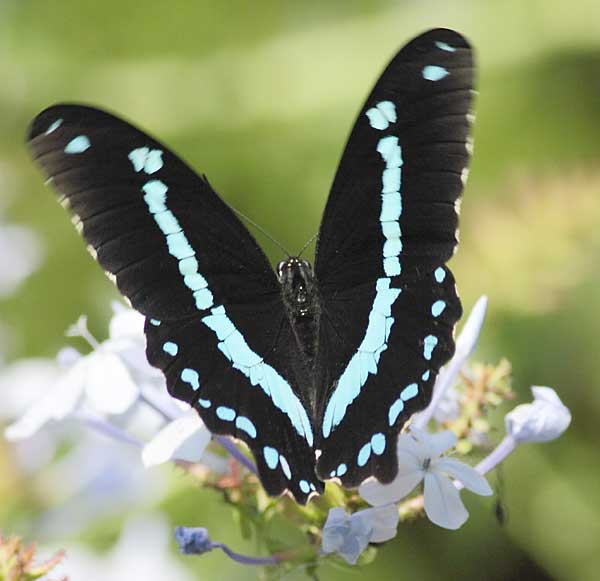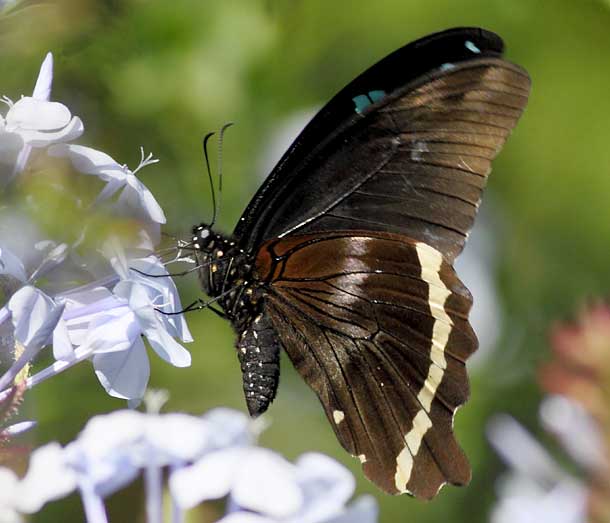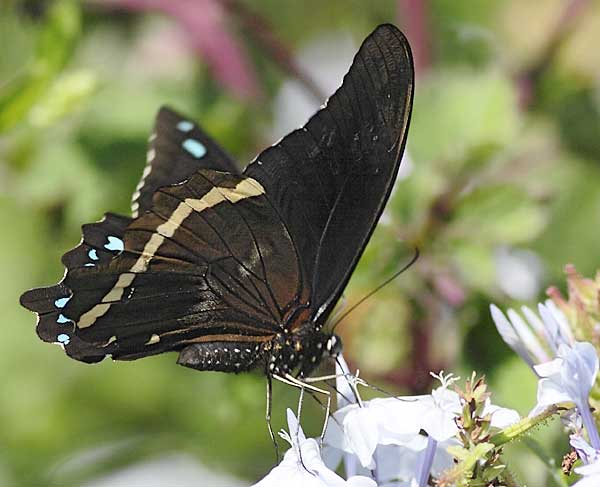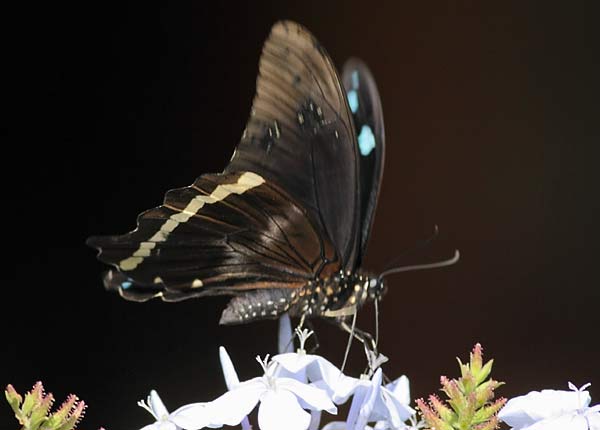Contact Details: Scotch Macaskill, Dirt Road Traders, Currys Post Road, Howick, KwaZulu-Natal, South Africa. Tel: +27 (0)82 578 2329. Privacy: Your privacy is guaranteed. See our Privacy Policy for more. This site accepts advertising and other forms of compensation - see Disclosure and Advertising for details. Site updated: 2022. Copyright © 2002 - 2022 Scotch Macaskill

| ||||||||||
|
||||||||||
|
SEE ALL |
Photographing Swallowtail Butterfly The butterfly pictures here show my first attempt at photographing a rapidly moving butterfly using a telephoto lens.
The butterfly pictures here show my first attempt at photographing a rapidly moving butterfly using a telephoto lens.
The subject is a Blue-banded Swallowtail butterfly (Papilio nireus), a striking black butterfly with metallic blue bands over its wings (above). Swallowtail butterflies are readily attracted to flowers, including those in the garden. The only problem when trying to phtograph them is that, when feeding from flowers, they flit very quickly from bloom to bloom. In between, they pause for a moment beside the bloom, their legs merely touching the flower (below) while maintaing balance by rapidly vibrating their wings.
This is great to watch, but difficult to photograph and impossible using a macro lens. I opted instead to use a telephoto lens, allowing me to keep some distance away. This meant I wasn't intimidating the insect, while also allowing me to more easily follow its movements. I used my Canon EOS 50D with a Canon EF 400mm f/5.6L USM telephoto lens. This prime (non-zoom) lens is also not image-stabilized. However, the simple construction means the lens is relatively light, very sharp even at maximum aperture, and extemely fast focusing. For those who cannot afford the much more expensive image-stabilized prime lenses like the 500mm or 600mm f/4 lenses from Canon or Nikon, this 400mm f/5.6 is a favorite of many photographers who shoot birds in flight. To freeze the butterfly's rapid wing movement, I used a relatively high ISO of 400 and aperture-priority (AV setting) with the lens wide open at f/5.6. This meant the camera automatically selected a shutter speed that was the highest possible for these settings and conditions (bright sunshine). Because of the frenetic movement of the subject, it was impossible to use a tripod or any form of support, so I had to hand-hold, which is an invitation for camera shake with a long lens. But in this case the high shutter speed (1/1600 sec) not only froze the wing movement, but also helped reduce camera shake (below).
When photographing a small, rapidly-moving subject, there's no time to re-compose or change focus points, so I stuck to the central focus point of the 50D while setting the camera's focus mode to AI Servo (follow-focus) and the shutter to high-speed continuous shooting. With this set-up, the EOS 50D body and EF 400mm f/5.6 lens performed superbly, grabbing focus almost instantaneously once I managed to find the subject in my viewfinder! My failure rate was quite high, with some shots showing the flowers but no butterfly - it was simply too quick for me on occasion. Generally though I was quite pleased for a first-time attempt. I shot in RAW and Jpeg and most the time the exposure was pretty good, considering the dark subject and white flowers, and sometimes against an almost black background (below).
Copyright © Scotch Macaskill. Return to Photo Info page for more photography articles. |
|||||||||
|
|
||||||||||



Comments
Have your say or ask any questions in the comment box below.